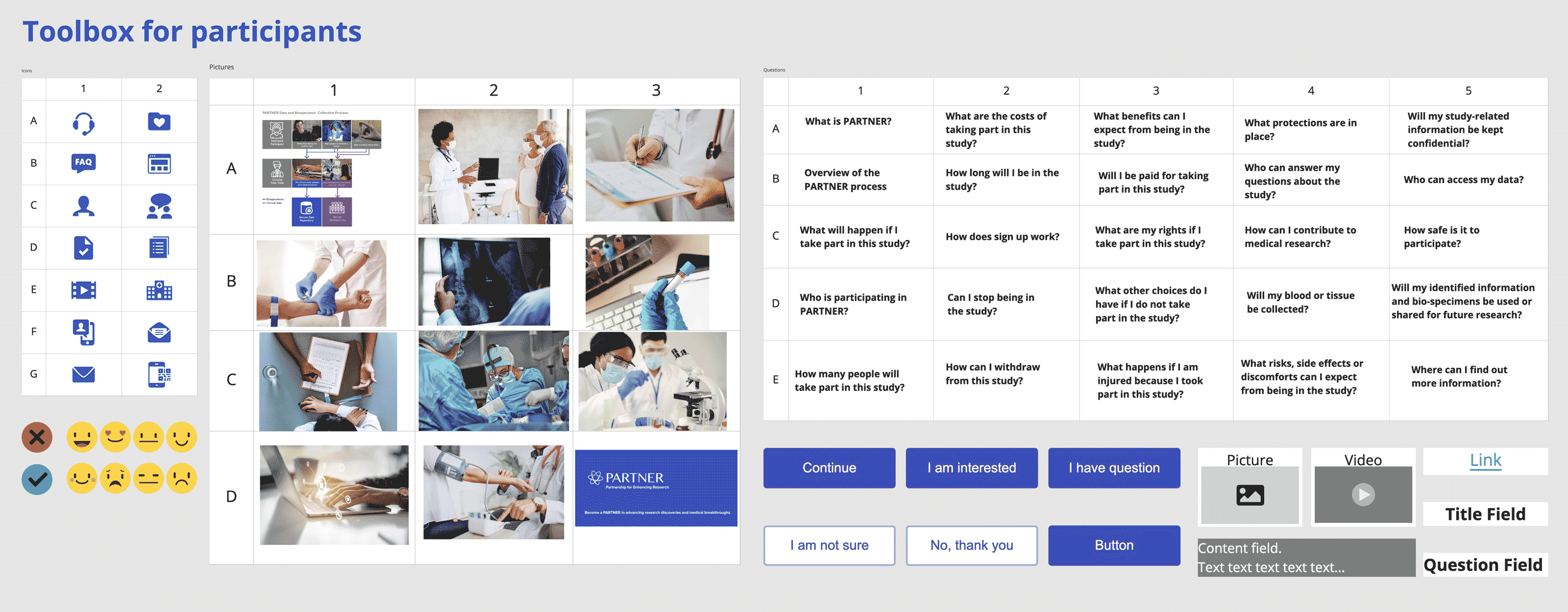About User Requirements Gathering
When building a new app or tool, experts from College of Medicine Research Information Technology will meet with representative groups of people that will use the system and document their needs so that the system will support them in their tasks and goals. In these conversations, RIT also pays attention to additional information about the environment people will be using the system in, their expectations for the system and the current challenges they face. Using this input to document system specifications, especially at the beginning of an effort, ensures success later on.

In a co-design session, participants use a toolkit created by RIT to describe what they think the finished system should look like.
How does user requirements gathering improve research?
By engaging with the people that will use the system directly, whether through interviews or a co-design process, RIT can unearth new information about the population, allowing our design team to avoid barriers to utilization and prevent attrition through user-centered design. Leveraging insights from the intended audience of a new system at the beginning of a development process can save resources later on, instead of using workarounds or costly redesigns in response to newly discovered information.
Purpose
Make decisions with data
Use input from users to ground specifications in data
Prioritize feature development
Learn what's important to users and what they can live without
Avoid costly
mistakes
Getting user input early prevents redesign and maximizes engagement
RIT's approach

Interviews
When RIT meets with a potential user of a system, we ask questions that prompt the user to describe their current practices and challenges. Understanding how a new system will fit into a person's current practice is key to a successful design. From the qualitative data gathered, the interviewers outline system specifications, describing how each proposed feature will benefit the user.

Co-design sessions
Co-design sessions allow a subject matter expert to participate in the development process, giving them a different set of tools to explain what they require from a system. RIT can create and lead co-design sessions that reveal necessary features for a system, along with the deeper motivations, emotions and purpose behind those requirements.
